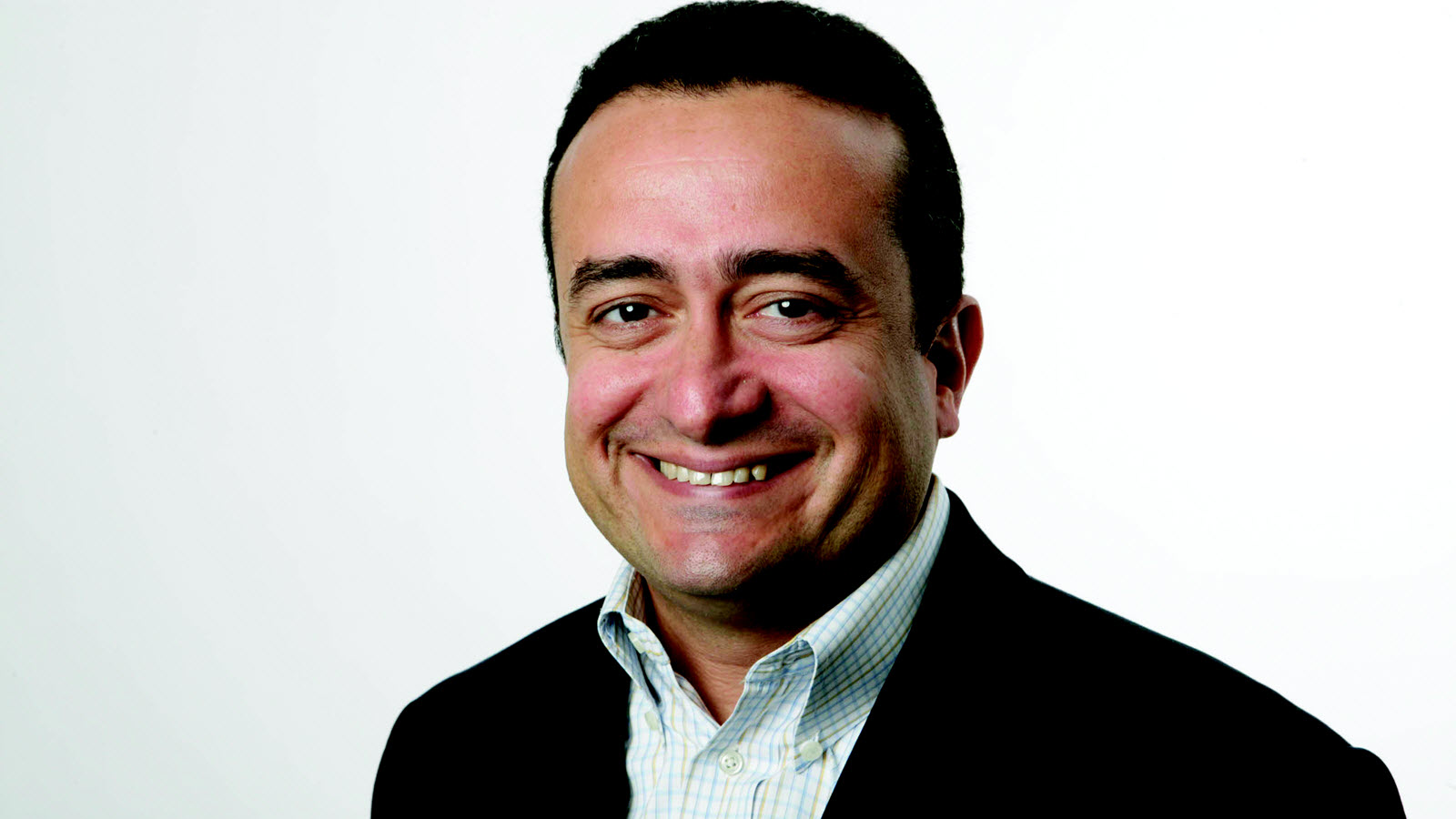Buyers Want Better Measurement, but Will Use Old Metrics in Upfront

New Metrics And Brand Safety are just two issues that media buyers who control billions of ad dollars say will be considered before their old-fashioned negotiations determine which networks will be winners and losers in the upfront.
Several of the buyers think better measurement could help TV, but they expect the current metrics, C7 and C3, to remain the currency for this year.
The buyers endorse the idea of audience buying and believe the addition of NBCUniversal to the OpenAP consortium will push advanced advertising forward. For now, though, they say it remains a small factor in the market.
Multichannel News asked some of TV’s top buyers about some of the news surrounding the market. Their answers follow.
The 2018 Upfront:Sales Execs Claim Strong Hand Going Into Upfront | Top Broadcast Sales Executives | Levy Wants 5% of TV Ad Budgets Spent on Audiences | The CW Brings a New Night to the Market | Pitching Hispanic Buying Power | Broadcast Networks Take Center Stage
MCN: How will NBCUniversal’s decision to work with OpenAP partners Fox, Turner and Viacom affect how much money flows into audience buying? Do you think they’ll be able to create a unified system for planning and buying audience-based campaigns?
Dani Benowitz, executive VP, strategic investment, Magna: Advertisers are organically moving dollars into the space as it evolves, regardless of the networks’ involvement in OpenAP. While OpenAP was a step in the right direction, it isn’t the tool itself that’s incentivizing and driving spend — it’s the desire to bring data and audience precision to traditional media channels. The hope is that with more (and larger) networks joining the consortium, the road towards an execution/transaction tool will become a short one.
The smarter way to stay on top of broadcasting and cable industry. Sign up below
It is definitely a realistic goal, as there are platforms currently available in the marketplace that currently offer a centralized system for planning and buying. It will be up to OpenAP to either license and adapt existing platforms, a definitively shorter route, or create their own proprietary tool. The recent addition of NBCU adds validity and scalability to the platform and we anticipate more advertisers taking advantage.

Chris Geraci, president, national video investment, OMD: We welcome NBCU’s forthcoming participation in OpenAP as we are committed to advancing and facilitating the practice of audience- based buying beyond age/gender demography at scale. The NBCU addition to OpenAP validates this approach to media buying and planning. As the first addition to the consortium since its launch, it is a positive step for OpenAP, which has not seen any membership momentum in its first year of operation. However, the challenge of evaluating a campaign using advanced targeting across all media companies still needs to be solved.
While we are encouraged by the expansion of OpenAP and the evolution of the platform itself, we believe that audience-based optimization of video is best served by proprietary agency platforms.
Mike Law, executive VP, managing director, U.S. media investment, Amplifi US, Dentsu Aegis Network: Audience-based buying will continue to grow at pace as we move forward. Our ability to target strategic audiences and increase reach against the hardest-to-find audiences is critical for our brands. OpenAP is a critical platform to help create consistency in the definition and sizing of audiences across partners, and NBCU joining helps to create more scale in the space. We are excited to see all of the networks making bigger investments in audience-based data products and evolving our negotiations to consider alternatives to legacy currency models.

Dave Penski, CEO, Publicis Media Exchange: This is a positive, albeit small, step in the right direction for the networks to move towards a more unified system. Right now, the amount of money flowing through audience buying on automated platforms is very small. The reason is that we are still buying national units until all units are made addressable; the “new data” does not help solve these issues. Agencies and clients have long had sophisticated data about audiences and could make informed decisions about what to buy. Furthermore, OpenAP is just on the planning side, and all buying is still in different systems for each vendor.
Lyle Schwartz, president of investment, North America, GroupM: Richer audience data can only benefit programmers. However, the insights that a client and their agency build for themselves about audiences across the entire video spectrum remain an important component of leverage in negotiations.
MCN: How much are data privacy at Facebook, content safety at YouTube and transparency and effectiveness issues with digital advertising affecting spending on TV?
Benowitz: While these concerns have resulted in a few big advertisers turning away from digital and back to TV, overall we have not seen a huge migration back to traditional TV. TV itself has been seeing an ongoing erosion of ratings and shift in consumption of content, so if anything the above effect has led to a slight acceleration of spend to FEP [full-episode programming] and other OTT distributors.

Geraci: To some degree, these issues continue to support demand for television among large, well-established advertisers and the agencies that serve them. While the value in precision targeting and younger-skewing audiences among social media platforms and user distributors of user-generated content is well-established, we have also seen the downside of brands being associated with unsavory material and other issues associated with digital-based video offerings. At the same time, television has its own set of issues with regard to audience measurement and, at times, unanticipated controversy surrounding on-air content and offair behavior (particularly in the news genre). If anything, all of this proves that there are nuances throughout the marketplace and it is naïve to assume there is a simple one-direction trend in advertiser spending.

Law: Brand safety and data protection are an “always-on” mindset, and have been for many years. We consider them as a No. 1 priority across all media channels — it is not a digital-only issue. We optimize our media plans to maximize reach against the audiences that can help drive growth, and the role of aligning with quality (and contextually relevant) content has proven to improve business results. We will continue to ensure all of our partners are fully compliant with data privacy guidelines and seek out the most premium ad-supported content.
Penski: This answer depends more directly on certain categories. We have not seen massive client reductions on either platform, though there has been some uncertainty about how these issues might impact the platforms as a whole.
Schwartz: So far, we have not seen significant client exodus from these platforms over these concerns, though there have been pauses of activity on the heels of high-profile ad misplacements that impinged on brand safety. Video is important to advertisers and we continue to encourage a holistic view across all distribution channels. We’re looking for continued improvement in transparency, effectiveness and brand safety in digital while also hoping for improvements in measurement and addressability in TV.
MCN: What steps can TV take to more effectively compete with digital and prevent spending from eroding?
Benowitz: One of the leading incentives for digital is its measurability. Fortunately, TV has started to adapt digital practices and is proactively evolving. We would like to see network groups begin to apply closed-loop measurement (sales lift, foot traffic, etc.) to larger traditional spends — upfront or scatter. Providing brands the ability to determine the ROI on traditional linear dollars would give cause for advertisers to leave their large traditional budgets untouched.
Geraci: The question really should be: What steps can commercial television take to retain or even grow audiences? Advertiser spending will continue to be reflective of audience size and engagement, regardless of the comparisons that can be made from one platform to another. Year-over-year ratings erosion is, by and large, the reason ad spending is shifting away from television. It is encouraging to see steps being taken to improve the viewer experience by re-imagining the decades-old structure and format of commercial delivery on TV. We hope these measures can lead to audience retention, and ultimately TV’s resilience as an ad-supported platform.
Law: We do not see this as TV vs. digital, or really any one channel in and of itself. It is about creating a holistic plan to optimize reach against real people, maximizing reach and impact overall. TV, delivered across all screens and channels, combined with digital media allows brands to compete and win at scale today, engaging consumers throughout their decision and purchase process.
Penski: Spend is not eroding as fast you might think: Over 50% of all media spend is still with TV networks between national/local and their owned digital properties. I believe TV can start giving viewers more options inside of [video-on-demand services] and other places, which allow for limited commercials and better demonstrate the value of advertising to the end user.

Schwartz: Better, more comprehensive measurement of total audiences across platforms, including audience engagement with commercials is key, plus the ability to operate against more refined, addressable audiences.
MCN: How are you approaching over-the-top viewing? Are you blending it with traditional linear or are there ways to take advantage of its digital delivery by mounting targeted and addressable campaigns?
Benowitz: As consumption shifts, advertisers must manufacture reach by leveraging new tools, tactics and media platforms — this includes OTT. From a consumer’s standpoint, they are watching “TV” regardless of whether it is through a cable subscription, DAI-enabled C7 VOD, or HDMI 2 DealID-delivered channels and as a holding company, we must begin to approach each channel in alignment with consumer perception — it’s all TV!
We must enable advertisers to follow consumption in one of two ways: Follow the GRPs (blended with traditional linear) or find precise audiences where they are viewing today (taking advantage of digital delivery). While it is one or the other, we are not at the place in time just yet to mandate which one is “better” than the other. More and more OTT/ connected-TV partners are enabling Nielsen DAR measurement, allowing advertisers to easily determine the added GRPs OTT/CTV brings to a larger “TV” plan.
Brands looking to follow their ideal consumers can easily layer on household level targetability. For the most part, those brands are also purchasing live linear and VOD against strategic targets, making it simple to add on incremental households within the OTT/ CTV environment.
Geraci: OTT in the general sense, represents the combination of high quality TV-based content with delivery mechanisms that make possible targeting and addressability that was once only available for digital content platforms. While the value of the television content in OTT stands on its own, the added benefit of the distribution platform makes it an area of particular interest, and one that we are taking a growing interest in. To that point, we have restructured our investment teams to take an agnostic approach to video, designed to deliver the best environment for client messages to reach their target audiences, regardless of device.
Law: We look at video across all screens, including OTT. What has been great about the evolution of video, whether that is long-form, short-form, mobile, web-based or OTT, is that we are now able to use data to better optimize our decisions.
We love that “TV” has the ability to play a definitive and measurable role across the full funnel, from the critical importance of broad reach, to a customized, one-to-one message to a single person at the critical point of purchase.
Penski: We are looking at this as a strong option for personalized targeted/addressable versus blending with linear. Overall, if TV wants to use data/segmenting etc., it needs to have more addressable options that allow for competition with digital dollars. The challenge is one will be much more cost effective than the other. We will then have to use the data to prove the attention/effectiveness of one versus other, as Joe Marchese would say.
Schwartz: The answer is both.
The Buyers

David Cohen
Agency: Mediabrands’ Magna
Title: President
Key Clients: Coca-Cola, Johnson & Johnson, Amazon
2016 Buying: $16.9 Billion
Chris Geraci
Agency: OMD
Title: President, National Video Investment, OMD
Key Clients: Pepsi, McDonalds, Apple
2016 Buying: $17.9 Billion
Mike Law
Agency: Dentsu Aegis Network’s Amplifi US
Title: Executive VP, Managing Director, U.S. Media Investment
Key Clients: GM, Subway, Microsoft
2016 Buying: $14.82 Billion
John Muszynski
Agency: Publicis Media Exchange
Title: Head Upfront Negotiator
Key Clients; Miller Coors, Campbell’s Marriott
2016 Buying: $39.7 Billion
Lyle Schwartz
Agency: GroupM
Title: Chief Investment Officer.
Key Clients: Unilever, Ikea, Target
2016 Buying: $32.2 Billion
Jon has been business editor of Broadcasting+Cable since 2010. He focuses on revenue-generating activities, including advertising and distribution, as well as executive intrigue and merger and acquisition activity. Just about any story is fair game, if a dollar sign can make its way into the article. Before B+C, Jon covered the industry for TVWeek, Cable World, Electronic Media, Advertising Age and The New York Post. A native New Yorker, Jon is hiding in plain sight in the suburbs of Chicago.

